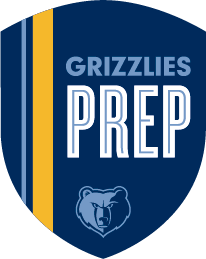What’s so Special About Special Educators?
Special educators have become increasingly valuable over the last decade. In 2017–18, the number of students ages 3-21 who received special education services under the Individuals with Disabilities Education Act (IDEA) was 7.0 million, or 14 percent of all public school students. Among students receiving special education services, 34 percent had specific learning disabilities.
The goal of special educators is to create instructional environments that challenge and support these students every day. This demands the most highly qualified teachers have the expertise needed to determine when and how to modify state guidelines and classroom lessons for students receiving special education services.
It is essential that all teachers who serve students with disabilities be involved in discussions and decision making regarding the following:
Intervention
Special educators need to proactively identify students before referrals, assessments, IEPs, and labeling, whenever possible. Special education teachers offer appropriate intervention assistance to support individual students in meeting their individualized goals as well as the school’s or state’s definition of proficiency in reading and math. Some questions that must be considered by special education teachers in the development and maintenance of intervention programs are the following: What assessments will be used to identify students’ instructional needs and monitor their progress? What level of intervention do the students need? Do they merely need some “catch up” time to learn something that they did not clearly understand the first time around, or do they need a significant amount of time and targeted instruction on one or many topics? Just as important as working together to plan intervention is connecting the intervention to the regular classroom and curriculum.
Curriculum adaptations
It is the responsibility of the special education teacher to ensure that students with disabilities are provided with an Individualized Education Plan (IEP) that is reflective of their current performance as well as realistic learning goals. IEPs require that the existing curriculum be adapted by the special educator to meet the specific instructional needs of students with IEPs. This means that the state’s goals and the school district’s curricular guidelines, textbooks, and supplementary materials must focus on the learning benchmarks that a student will need to know well at his/her individualized level.
Instruction
Special educators take ownership over what needs to be done in the classroom for students with disabilities. Special education teachers work collaboratively with general education teachers to ensure that students are meeting learning requirements and can meet IEP goals.
Classrooms experience incredible outcomes when special education teachers master intervention, curriculum adaption, and instruction. These teachers allow classrooms to:
Create High Expectations for All Students
In an IEP, a student’s IEP goals should be based on the learning standards for their state, which chart a trajectory of what all students are expected to learn in core content subjects by the end of the school year. Special education teachers have expertise in differentiated instruction and curriculum adaptations, which allows students with disabilities to be taught the same material as their non-disabled peers.
Celebrate Diversity in Learning
Special educators realize that all classrooms are filled with diverse learners and that every learner has strengths worth celebrating and challenges worth supporting. Special education teachers help create a classroom culture in which learning differences are less “different” and instead foster an understanding that everyone learns in their own way.
Support all students through tailored teaching
Special educators who co-teach inside an inclusion classroom provide information, suggestions, additional remediation, positive behavior intervention, multi sensory instruction, and small group instruction within the general education classroom. Since special education teachers are masters of differentiating instruction, this expertise helps all students. Special education teachers constantly weave in specially designed instruction and supports that assist all students in growing academically and behaviorally.
As you can see, working as a special education teacher is a profession that requires significant skills and training, but can be one of the most rewarding jobs. There are a number of professional and personal advantages of working in special education. First, it is a joy serving students with disabilities. At-risk students need highly skilled teachers even more than students without learning disabilities. While the patience and persistence required for this work is tiring, the joy of student learning victories are all the more emotionally and professionally fulfilling. Second, specialization leads to increased job opportunities. A certified and enthusiastic special education teacher can expect stable and increasing job prospects anywhere in the United States.
Beyond these benefits, it is vital that potential special education teachers consider their true passion for the mission of this work. Special education is generally considered to be a challenging teaching position and should only be taken on by those who are fully prepared to help the most vulnerable learners.
- Kathryn Berlin, Special Education Teacher


